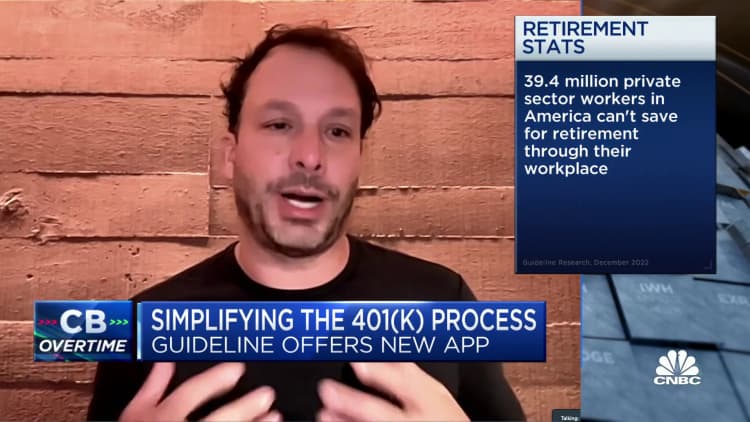Almost half of 401(k) investors clueless about their investments: CNBC
Luke Chan | E+ | Getty Images
Almost half — 46% — of 401(k) investors don’t know what investments are in their workplace retirement plan, according to a new CNBC Your Money Survey.
But that’s not necessarily bad news, financial advisors said.
That’s because most employers that offer a 401(k) plan automatically enroll workers into it, selecting on workers’ behalf how much money is contributed from each paycheck and how those funds are invested. (Workers can change these later or opt out altogether.) Odds are those workers are saving money in a target-date fund, or TDF, a well-diversified portfolio tailored to an investor’s age.
The bottom line: Even if a 401(k) investor is unaware that they’re saving money or clueless about the funds available for investment, it’s likely they’re exhibiting reasonable savings behavior by default, advisors said. Their investment allocation and diversification also are perhaps better than could be achieved on their own, especially for workers who don’t possess much investment expertise.
“I don’t view that as a bad thing,” Sean Deviney, a certified financial planner based in Fort Lauderdale, Florida, said of the survey statistic on investment awareness. “It’s in their best interest to be saving for their future income needs.
“It’s in their best interest to be getting their employer match,” he added.
The CNBC survey polled 1,673 U.S. adults who participate in their company 401(k) plan.
Most 401(k) plans use auto-enrollment
Auto-enrollment hasn’t always been a cornerstone of 401(k) savings. Employers started using the feature more regularly after the Pension Protection Act of 2006 made it easier to adopt.
Twenty years ago, the CNBC statistic “would be more alarming,” said Deviney, who is the director at Provenance Wealth Advisors.
Almost 59% of employers sponsoring a 401(k) plan used auto-enrollment in 2021, up from 47% in 2012, according to the Plan Sponsor Council of America, a trade group.
In behavioral finance terms, auto-enrollment is known as a “nudge,” a mechanism that helps workers enroll and save in a 401(k) when they might not have otherwise, whether due to procrastination or some other roadblock.

“We’re talking about human beings, who kind of live and breathe inertia,” said Ellen Lander, principal and founder of Renaissance Benefit Advisors Group based in Pearl River, New York.
“If they’re automatically enrolled and being auto-enrolled into a target-date fund, that’s probably one of the best decisions that was made for them,” Lander said of 401(k) participants.
About 87% of 401(k) plans use a TDF as their default investment option, according to PSCA data.
TDFs capture 60% of 401(k) contributions
Target-date funds are already the most popular 401(k) investments. They captured 60% of all 401(k) contributions made in 2021, according to Cerulli Associates. Cerulli estimates the share will rise to 66% by 2027.
The funds automatically take care of important investment functions such as diversifying across asset classes, rebalancing investors’ savings and getting less risky as participants near retirement, Lander said.
“It’s probably better for most people than trying to do it yourself,” she said.
That said, workers shouldn’t assume their employer’s auto-enrollment strategy will fit their needs.
Companies don’t always auto-enroll workers at an optimal savings rate, for example, Deviney said. It may also not be high enough to get their full 401(k) match — effectively leaving free money on the table. About 43% of 401(k) plans that automatically enroll workers then automatically increase their contributions over time, according to PSCA data.
Auto-enrollment may also be an issue to the extent workers don’t know they have built savings and then inadvertently leave their money behind if they leave an employer.
It’s also important to pay attention to factors like investment fees, advisors said.
Index and actively managed TDFs charged an average annual fee of 0.27% and 0.82%, respectively, in 2022, according to Morningstar data. Any fund for which an investor is paying “materially more” than the average might consider saving just up to the company match in their 401(k), and then saving any additional money in a different TDF outside of the 401(k) in an individual retirement account, Lander said.
Investors who want to learn more about their investment options or contributions should contact their human resources department for instructions on how to access their 401(k) account, Deviney said.






